The Hell Creek Formation is one of paleontology’s most significant treasure troves—a geological time capsule preserving the final chapter of dinosaur dominance on Earth. Stretching across portions of Montana, North Dakota, South Dakota, and Wyoming, this Late Cretaceous sedimentary layer records approximately 2 million years of Earth’s history, culminating in the catastrophe that ended the Mesozoic Era. Within its multi-colored layers of sandstone, mudstone, and shale lies an extraordinary fossil record documenting not just dinosaurs but an entire ecosystem that thrived just before the asteroid impact that would forever change our planet’s evolutionary trajectory. From iconic Tyrannosaurus rex specimens to microscopic pollen grains, Hell Creek offers scientists an unparalleled window into one of Earth’s most pivotal transitions—the moment when the Age of Dinosaurs gave way to the Age of Mammals.
The Geological Formation and Age
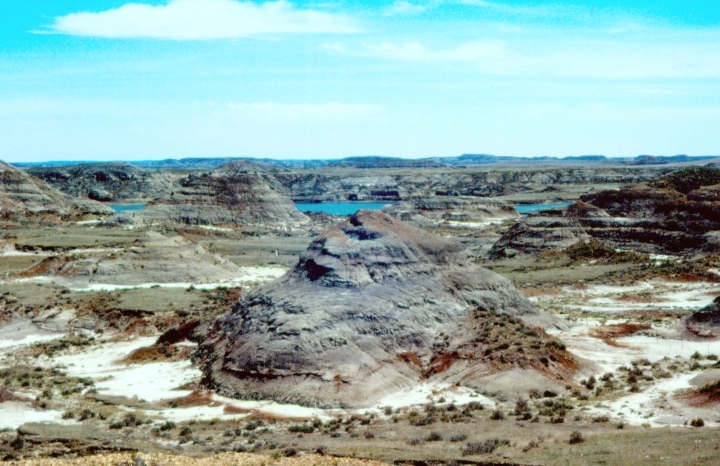
The Hell Creek Formation represents the final 1.5-2 million years of the Cretaceous Period, spanning approximately 68-66 million years ago. Geologically speaking, it consists primarily of non-marine sediments deposited by rivers and streams on an ancient coastal plain that bordered the Western Interior Seaway. These sediments were laid down layer by layer as the seaway gradually retreated eastward during the late Maastrichtian age. The formation varies in thickness from 170 to 520 feet, with most exposures revealing distinctive alternating bands of sandstone, siltstone, and mudstone that reflect changing depositional environments over time. Paleontologists value Hell Creek particularly because it contains the K-Pg boundary layer (formerly K-T boundary)—a thin, iridium-rich clay band that marks the exact moment of the asteroid impact and the end of the Mesozoic Era.
Discovery and Naming

The Hell Creek Formation received its name from geologist Barnum Brown, who conducted extensive fossil expeditions in the area beginning in 1902. Brown named the formation after Hell Creek, a tributary of the Missouri River in Montana, where he made several significant dinosaur discoveries. His expeditions, sponsored by the American Museum of Natural History, yielded some of the first Tyrannosaurus rex specimens ever found. The naming of the formation occurred during the “Bone Wars” era of American paleontology, a period of intense fossil-hunting competition. While Brown is credited with the formation’s naming, numerous paleontologists, including Edward Drinker Cope and Othniel Charles Marsh, had previously collected fossils from the region without recognizing it as a distinct geological unit. Today, the name “Hell Creek” carries almost mythological significance among paleontologists, representing both the final flourishing of dinosaurs and the dramatic circumstances of their extinction.
The Prehistoric Environment
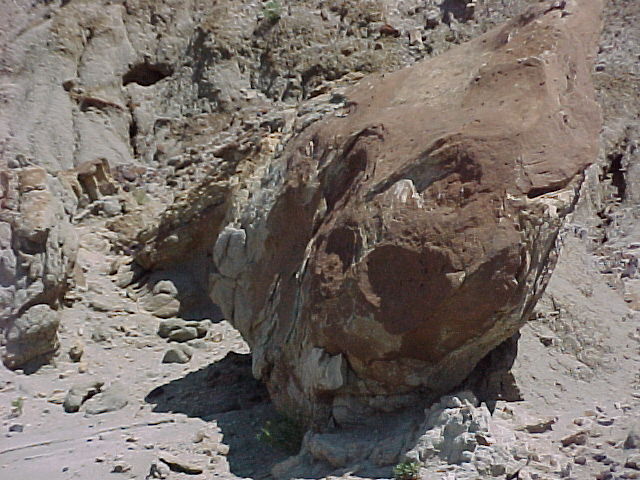
During the Late Cretaceous, the Hell Creek region was dramatically different from today’s semi-arid landscape. Paleobotanical evidence indicates a subtropical to warm temperate climate with abundant rainfall supporting lush forests dominated by angiosperms (flowering plants), conifers, and ferns. The environment resembled a mix between modern Louisiana bayous and Pacific Northwest forests, with meandering rivers, swamps, and floodplains creating a mosaic of habitats. Seasonal variations existed, with evidence of both wet and dry periods throughout the year. Oxygen isotope studies of fossil material suggest mean annual temperatures around 60-70°F (16-21°C), considerably warmer than the region today. The abundant vegetation supported a diverse ecosystem of herbivores, which in turn sustained large predators. This rich environment, positioned at a relatively high paleolatitude (approximately 50°N), demonstrates that warm conditions extended much farther north during this greenhouse period of Earth’s history.
Famous Dinosaur Discoveries
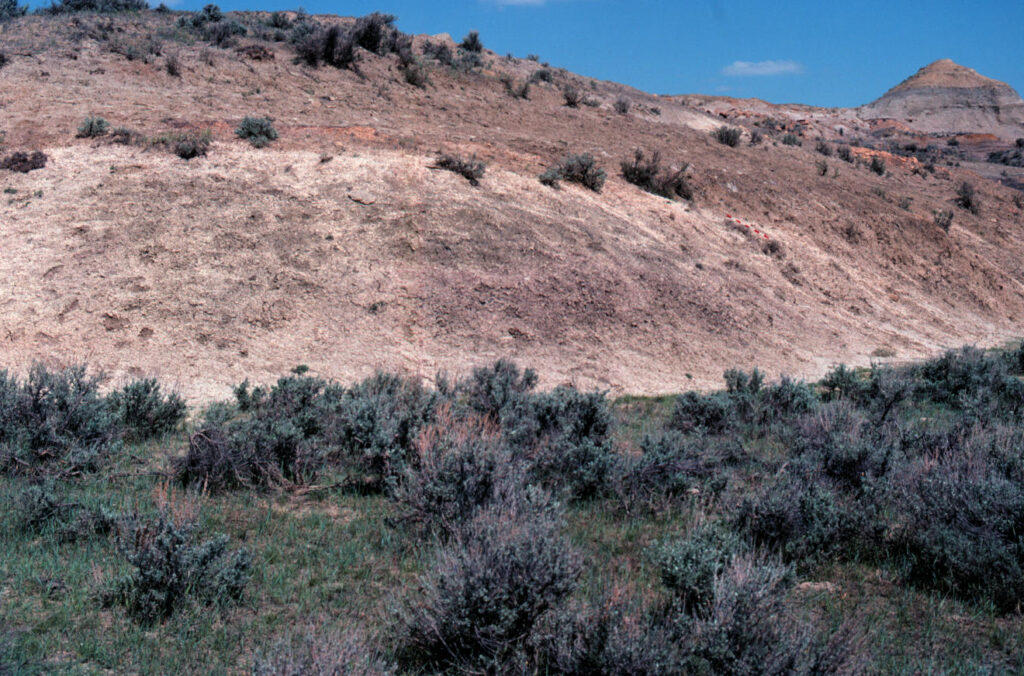
The Hell Creek Formation has yielded some of paleontology’s most iconic dinosaur specimens. Most notable is “Sue,” the largest and most complete Tyrannosaurus rex skeleton ever discovered, unearthed in South Dakota in 1990 by fossil hunter Sue Hendrickson. Triceratops fossils are particularly abundant in Hell Creek sediments, with hundreds of specimens recovered, including remarkable skull material showing various growth stages of this three-horned herbivore. The duck-billed hadrosaur Edmontosaurus has been found with preserved skin impressions, providing crucial information about dinosaur soft tissues. Smaller predatory dinosaurs like Dakotaraptor, discovered in 2005, have helped fill important gaps in our understanding of dromaeosaur evolution. Perhaps most scientifically valuable was the discovery of “Leonardo,” a mummified Brachylophosaurus with preserved skin, scales, and even stomach contents intact, offering unprecedented insights into dinosaur anatomy and diet. These remarkable specimens continue to reshape scientific understanding of dinosaur biology, behavior, and evolutionary relationships.
The K-Pg Boundary Layer
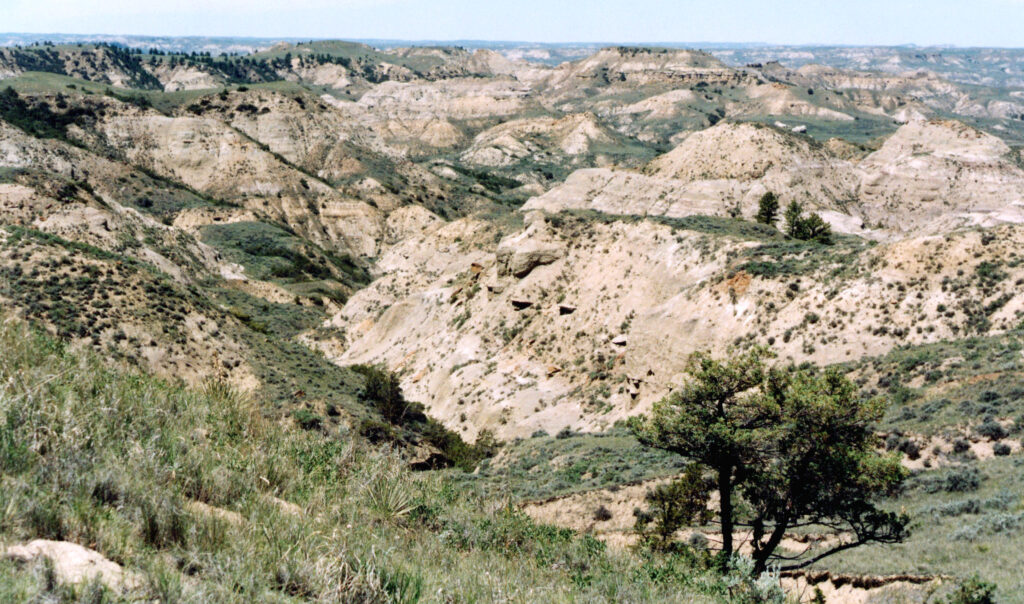
The Cretaceous-Paleogene (K-Pg) boundary layer represents one of Earth’s most significant extinction events and is preserved within the uppermost portion of the Hell Creek Formation. This thin, clay-rich layer contains anomalously high concentrations of iridium, an element rare on Earth’s surface but common in asteroids. This “iridium anomaly,” first identified by physicist Luis Alvarez and his geologist son Walter Alvarez in 1980, provided compelling evidence for the asteroid impact theory of dinosaur extinction. At Hell Creek locations, the boundary layer often appears as a 1-2 centimeter band of light-colored clay, sometimes containing shocked quartz and microscopic tektites—tiny glass spherules formed from rock vaporized during the impact. Fossil pollen studies across this boundary show an abrupt shift from Cretaceous flora to early Paleogene plant communities, indicating a rapid environmental transformation. The presence of this boundary layer makes Hell Creek one of the few places on Earth where scientists can directly examine the sedimentological evidence of this pivotal moment in Earth’s history.
Beyond Dinosaurs: The Complete Ecosystem
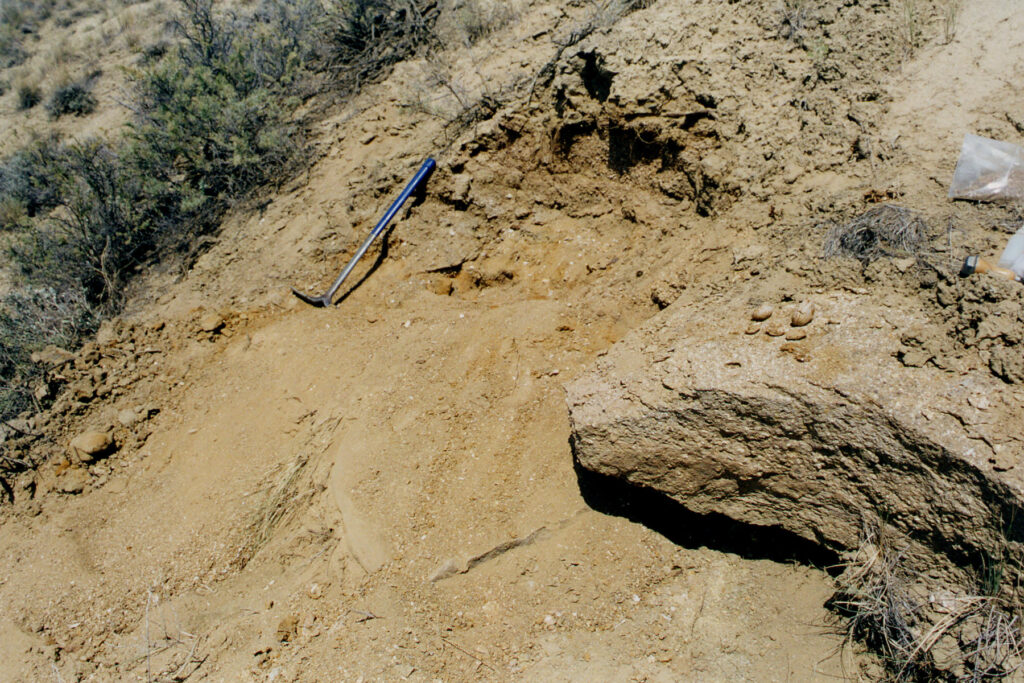
While dinosaurs capture the public imagination, the Hell Creek Formation preserves evidence of an entire Late Cretaceous ecosystem. The waters teemed with garpike, sturgeon, and freshwater sharks, while the land supported diverse mammals, including multituberculates, marsupials, and early placental mammals no larger than modern rodents. Amphibians, turtles, crocodilians, and champsosaurs inhabited wetland environments, with spectacular specimens like the 40-foot aquatic reptile Mosasaurus occasionally discovered in deposits where the formation interfaces with marine sediments. The skies were patrolled by pterosaurs and early birds, including Avisaurus, one of the largest known Cretaceous birds. Even invertebrate life is well-documented through mollusk shells, insect burrows, and amber containing preserved insects. Plant life is extensively represented through leaf impressions, petrified wood, pollen, and seeds, revealing complex forest communities dominated by early angiosperms, ginkgoes, cycads, and conifers. This comprehensive fossil record allows paleontologists to reconstruct entire food webs and ecological relationships in unprecedented detail.
The Mass Extinction Event
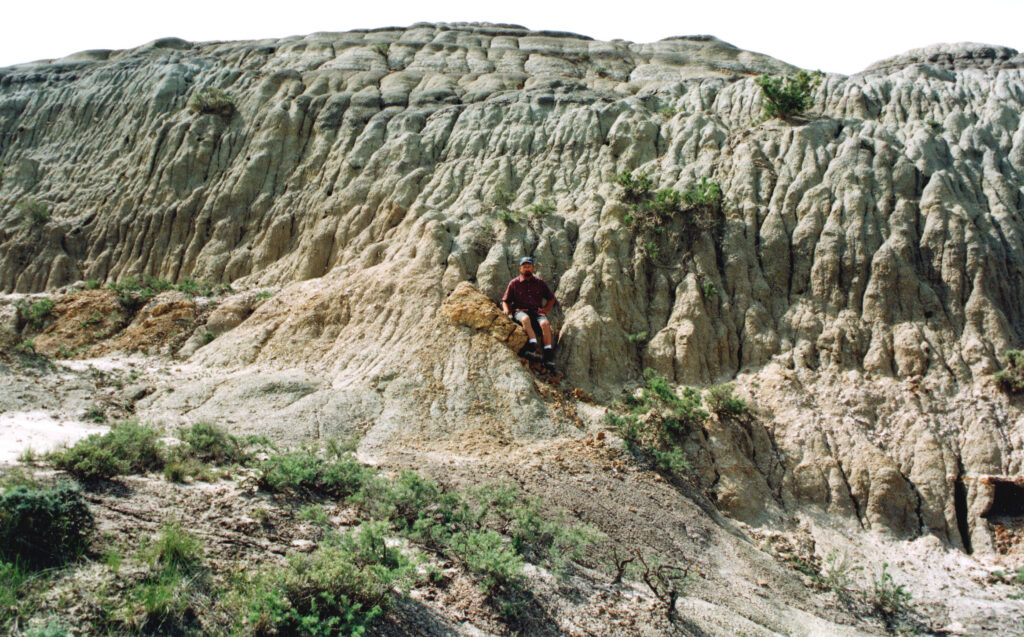
The Hell Creek Formation uniquely documents the most infamous mass extinction in Earth’s history, when approximately 75% of all species vanished within a geologically brief timeframe. The primary trigger was the Chicxulub impactor, an asteroid or comet approximately 6-9 miles (10-15 kilometers) in diameter that struck the Yucatán Peninsula in Mexico. This impact released energy equivalent to billions of Hiroshima bombs, triggering tsunamis, earthquakes, and wildfires while ejecting massive quantities of debris into the atmosphere. The sedimentary record at Hell Creek shows evidence of this global catastrophe, including deposits containing debris from the resulting firestorms. In the immediate aftermath, photosynthesis was severely compromised by atmospheric dust and aerosols blocking sunlight, causing plant communities to collapse and disrupting food chains. Acid rain and rapid climate fluctuations further stressed surviving organisms. The Hell Creek record provides compelling evidence that while dinosaurs were likely already experiencing some environmental stresses, the asteroid impact delivered the decisive blow that ended their 165-million-year dominance of terrestrial ecosystems.
Survivors and the Dawn of a New Era
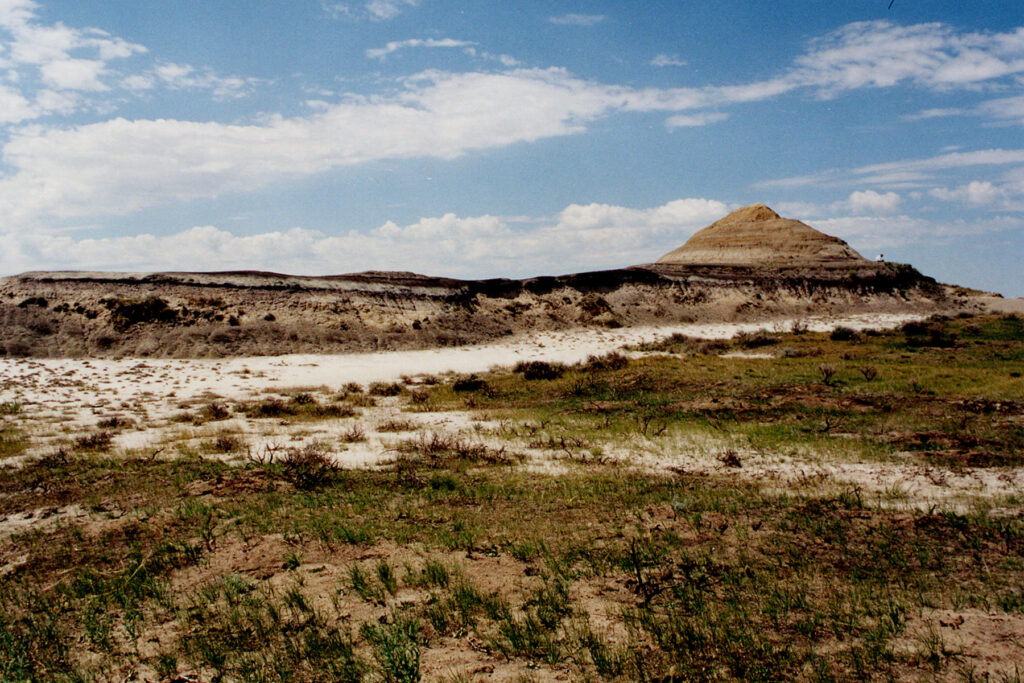
The fossil record preserved in the Hell Creek Formation and the overlying Fort Union Formation provides critical insights into which organisms survived the mass extinction and how life recovered. Small-bodied animals with generalist diets fared better than specialist feeders, with certain mammals, birds, crocodilians, turtles, amphibians, and fish surviving in significant numbers. Among plants, species that could reproduce via spores or seeds that remained dormant through harsh conditions showed higher survival rates. The earliest Paleocene deposits immediately above the boundary layer contain a distinctive “fern spike”—evidence that ferns, as opportunistic colonizers, were among the first plants to repopulate the devastated landscape. Early mammalian diversity increased rapidly, with fossil evidence showing that within just a few hundred thousand years after the extinction, mammals began occupying ecological niches previously dominated by dinosaurs. These Hell Creek survival patterns support the evolutionary concept that major extinction events, while devastating, create opportunities for previously marginalized groups to diversify and thrive in the aftermath.
Modern Paleontological Techniques
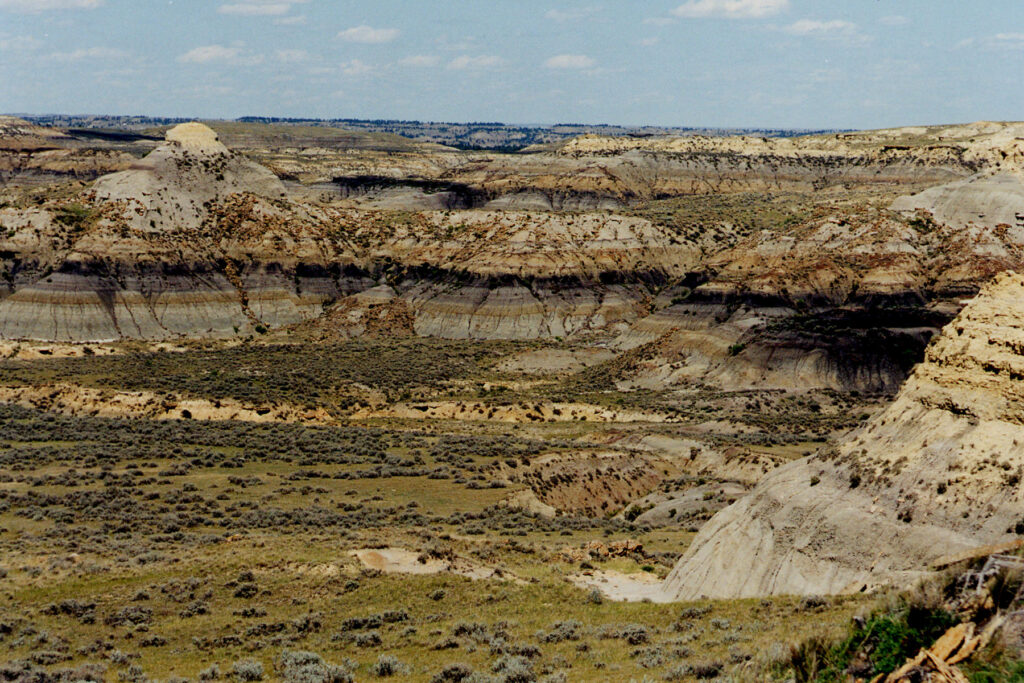
Research at Hell Creek has evolved dramatically from early expeditions that focused primarily on collecting large, spectacular specimens. Modern paleontologists employ sophisticated techniques, including CT scanning, which allows the examination of internal structures without damaging fossils, and histology, the microscopic study of bone tissue that reveals growth patterns and metabolism. Isotope analysis of teeth and bones provides insights into ancient diets and climate conditions, while paleogenomics attempts to recover ancient DNA and proteins from exceptionally preserved specimens. Taphonomic studies examine how organisms became fossilized, helping scientists distinguish between normal mortality patterns and mass-death events. Paleontologists now conduct systematic, fine-scale excavations with precise stratigraphic control, recording the exact position of even microscopic fossils to reconstruct ancient environments with unprecedented accuracy. Many Hell Creek sites employ comprehensive surveying where all fossils, regardless of size or perceived importance, are collected and documented, ensuring that inconspicuous but scientifically valuable specimens aren’t overlooked in favor of more dramatic finds.
Controversial Findings and Debates
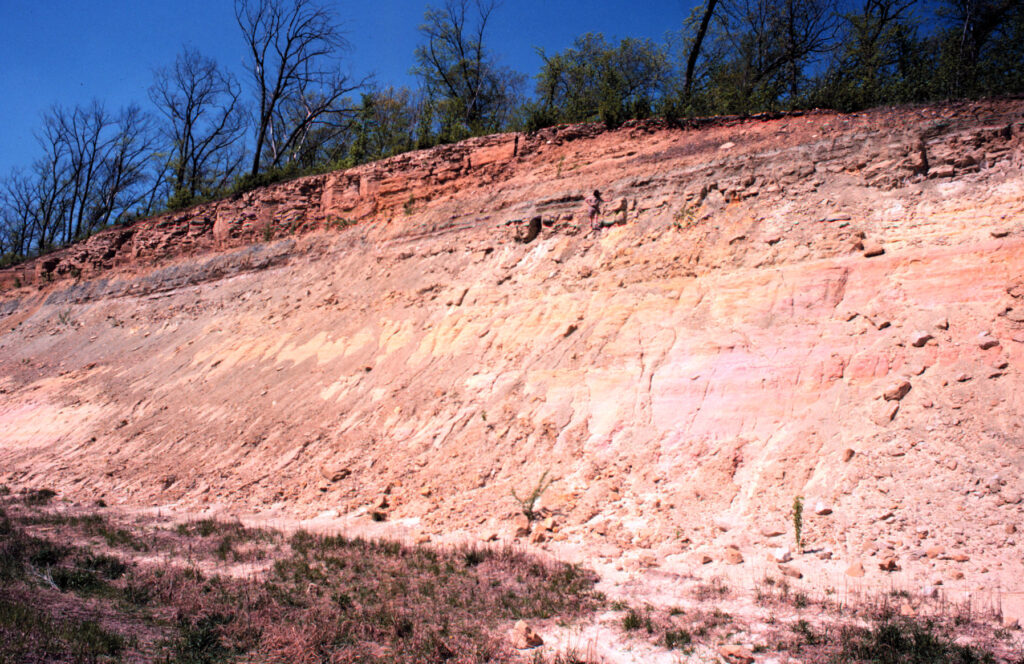
The Hell Creek Formation remains at the center of several significant paleontological controversies. Perhaps most notable is the “three-meter gap” debate—some researchers have argued that no dinosaur fossils occur in the uppermost three meters of Hell Creek sediments, suggesting dinosaurs were already extinct before the asteroid impact. However, subsequent discoveries have challenged this interpretation, with dinosaur remains now documented much closer to the boundary layer. Another controversy surrounds the speed of extinction, with some scientists arguing for a gradual decline of dinosaurs rather than an abrupt termination. The discovery of dinosaur fossils in the earliest Paleocene (post-impact) layers has sparked intense debate about whether some dinosaur populations briefly survived the initial catastrophe. Climate studies based on plant fossils have generated disagreement about whether significant global cooling was already underway before the impact. Even the taxonomy of Hell Creek dinosaurs creates controversy, with ongoing debates about whether certain specimens represent distinct species or different growth stages of known species.
Challenges of Excavation
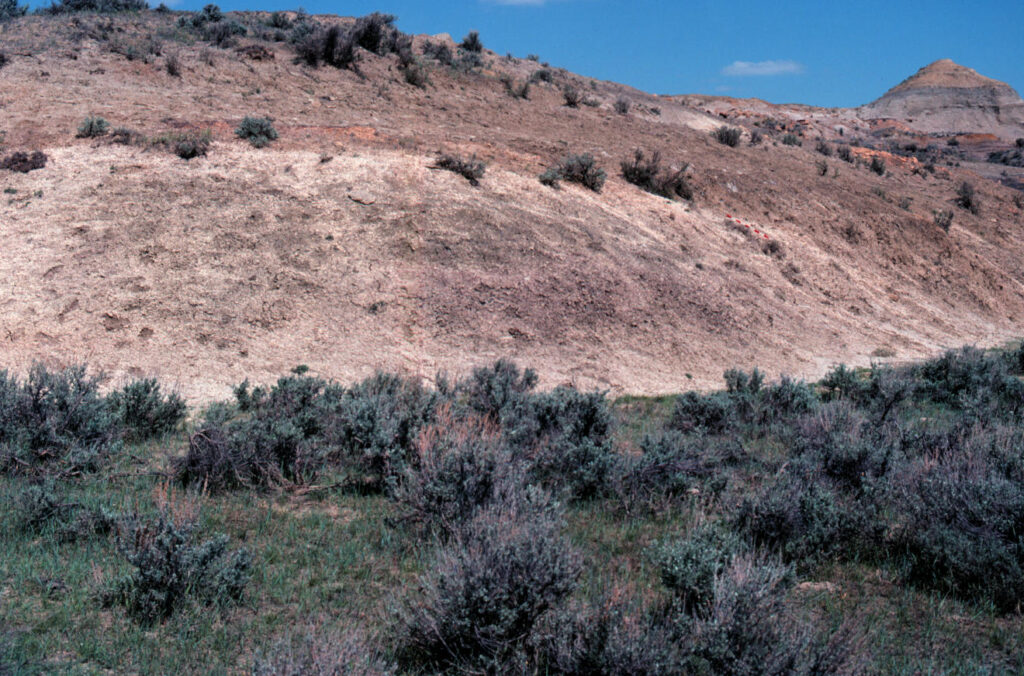
Conducting paleontological work at Hell Creek presents numerous challenges that test even experienced field researchers. The formation’s sediments often form steep, unstable badland topography, requiring careful navigation and sometimes technical climbing skills. Summer temperatures regularly exceed 100°F (38°C), while winters bring freezing conditions and snow that make fieldwork impossible for months. The remoteness of many productive sites necessitates transporting equipment, supplies, and eventually fossils across difficult terrain without vehicle access. When large specimens are discovered, teams must employ specialized techniques, including plaster jacketing and helicopter airlift, to safely remove fossils weighing several tons. Legal complications frequently arise as Hell Creek exposures cross a patchwork of federal, state, tribal, and private lands, each with different permitting requirements and ownership rules for discovered fossils. Despite these challenges, Hell Creek remains one of the most intensively studied geological formations in North America, with multiple research institutions conducting annual expeditions to continue unlocking its paleontological secrets.
Modern Relevance and Lessons
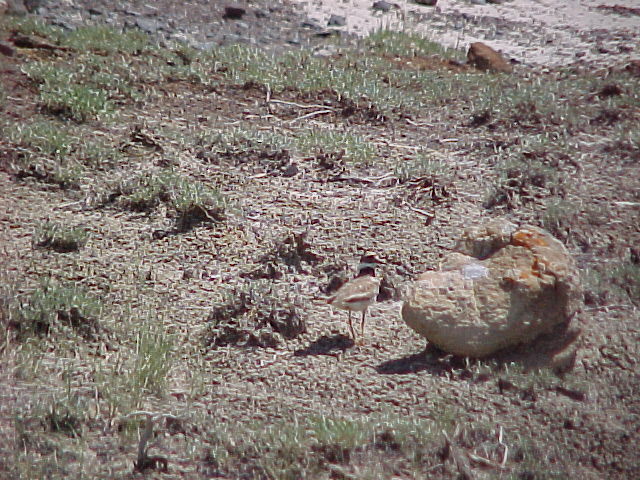
The Hell Creek Formation offers profound insights relevant to modern environmental concerns, particularly regarding extinction dynamics and climate change. The K-Pg extinction event represents a natural experiment in how ecosystems respond to rapid environmental perturbations, providing context for understanding modern biodiversity loss. Analysis of Hell Creek plant fossils has been crucial for calibrating climate models used to predict future warming scenarios, as they document a greenhouse Earth with elevated CO₂ levels. Research on extinction patterns at Hell Creek demonstrates that even dominant and seemingly invulnerable groups can collapse when environmental changes occur too rapidly for adaptation. The formation’s record of ecosystem recovery following a catastrophe provides valuable data on resilience, succession patterns, and the time scales required for biodiversity to rebound. Perhaps most significantly, Hell Creek documents that evolutionary success offers no guarantee of continued survival—dinosaurs had thrived for over 165 million years before their sudden demise, a sobering reminder that no species, including humans, is immune to extinction.
Public Fascination and Cultural Impact
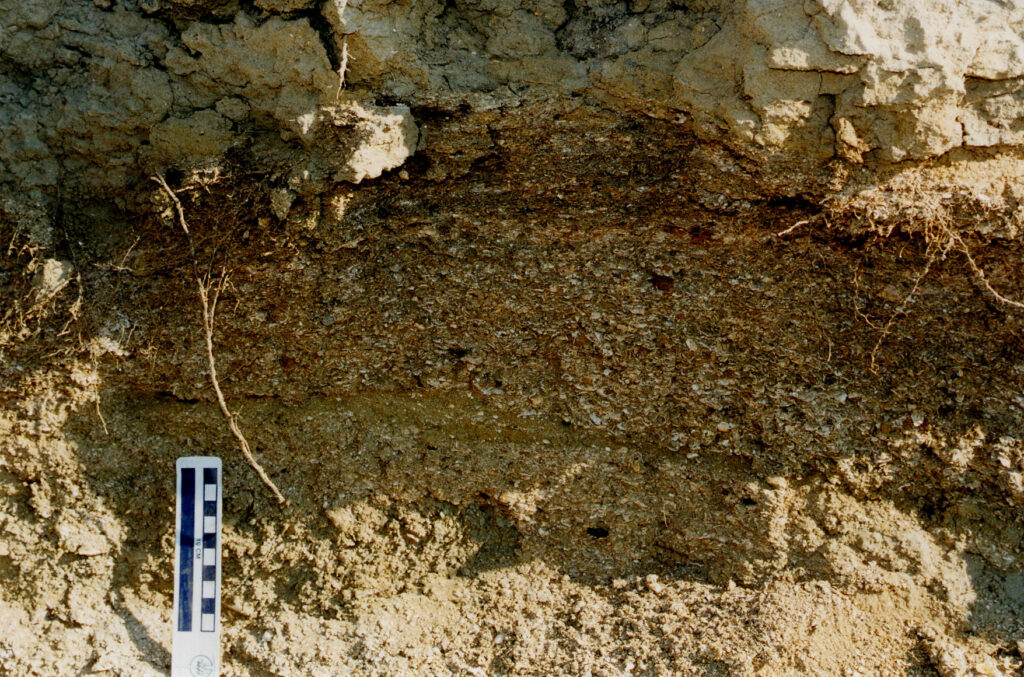
The Hell Creek Formation has transcended pure scientific interest to become a significant element of popular culture and public engagement with paleontology. Museums worldwide feature Hell Creek specimens as centerpieces of their dinosaur exhibits, with Sue the T. rex at Chicago’s Field Museum attracting millions of visitors annually. Documentary series like PBS’s “Nova” and BBC’s “Walking with Dinosaurs” have dedicated extensive coverage to Hell Creek’s prehistoric environment and extinction story. The formation has inspired artistic reconstructions by renowned paleoartists, including John Gurche and Julius Csotonyi, whose scientifically informed paintings and sculptures bring Hell Creek’s ancient ecosystem vividly to life. Commercial fossil hunting in the region has sparked important ethical debates about who should own and study paleontological heritage. Several Hell Creek sites offer public programs where visitors can participate in actual dinosaur excavations under professional guidance. This widespread cultural impact ensures that Hell Creek’s significance extends far beyond academic circles, helping to maintain public support for continued paleontological research and the conservation of fossil-bearing lands.
Conclusion
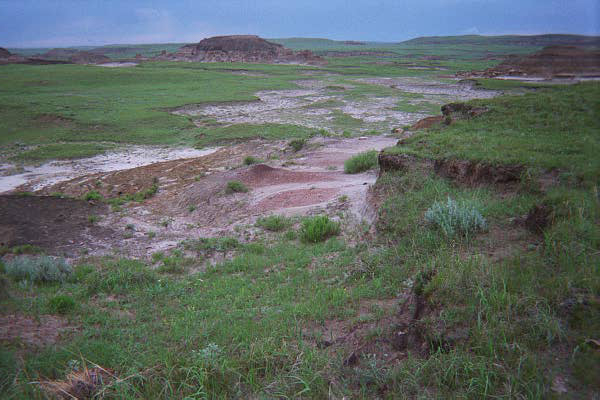
The Hell Creek Formation stands as both a graveyard and a time capsule—a geological archive preserving the final moments of the Mesozoic world and the dawn of a new evolutionary era. Its sediments tell a story spanning millions of years, yet culminating in catastrophic change within days or hours. As paleontologists continue applying new technologies and methodologies to Hell Creek fossils, our understanding of this pivotal moment in Earth’s history grows increasingly nuanced. Beyond satisfying scientific curiosity about prehistoric life, Hell Creek offers profound lessons about evolution, extinction, and ecological resilience that resonate with contemporary concerns. In a time when human activities are driving a modern extinction crisis, the ancient lessons preserved in Hell Creek’s colorful badlands have never been more relevant. Through continued research and public education, this remarkable formation will continue revealing insights about Earth’s past while helping us navigate our planet’s uncertain future.




